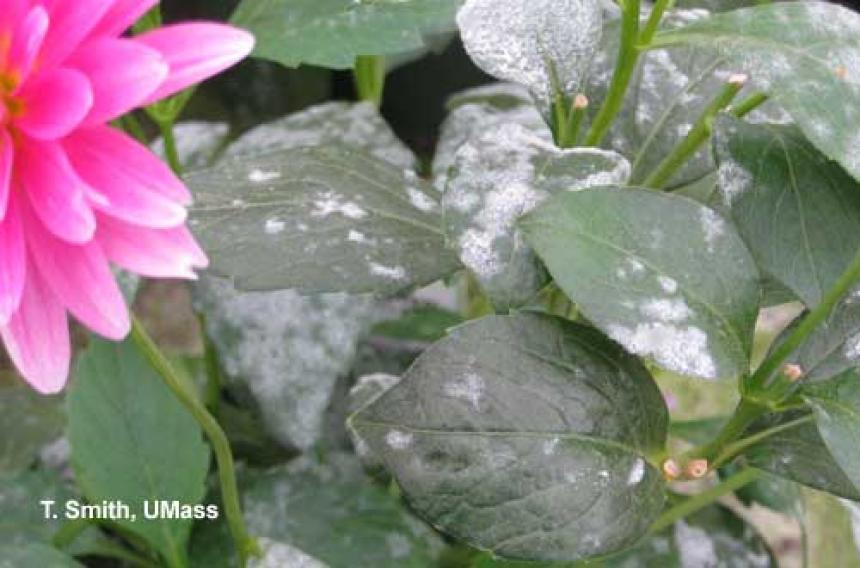Powdery mildews are one of the most common diseases of ornamental plants; many nursery, flower, and woody plants are susceptible. The disease is easily recognizable as a white to gray powdery growth on leaves and sometimes stems and flowers. Powdery mildew may have little or no affect on the plant (other than aesthetic) or it may cause infected leaves to distort, discolor, wither, and defoliate prematurely. Symptoms and their severity depend upon the cultivar or species of host plant, the powdery mildew species, environmental conditions, and the age of plant tissue when it first became infected.
Powdery mildews are favored by high relative humidity (greater than 95%), moderate temperatures (68°-86° F), and low light intensities. The disease is more prevalent in the spring and fall when large differences between day and night temperatures occur. Temperatures above 90° F kill some Powdery mildew fungi and spores and the presence of free water can reduce spore germination.
Monitor crops on a regular basis for Powdery mildew diseases. Epidemics that seem to develop overnight are often the result of undetected low level infections that have spread spores throughout the greenhouse. Rogue infected plants or prune out diseased tissue. Place diseased material into a plastic bag to prevent spores from spreading. The use of resistant cultivars or species is a good management tactic. Although few ornamental crops have been bred for resistance, cultivars of African violet, Begonia, rose, pansy, Zinnia, Monarda, and Phlox with resistance are available. Avoid overcrowding of plants and provide good air movement. Keep relative humidity levels low in the greenhouse by a combination of heating and venting in late afternoon and early morning. Clean the greenhouse thoroughly between crops, eliminating all weed hosts and volunteer plants. Unlike most fungi, powdery mildews only colonize the surface of plants making chemical eradication possible.
Fact Sheet: Powdery Mildew Diseases of Ornamental Plants
